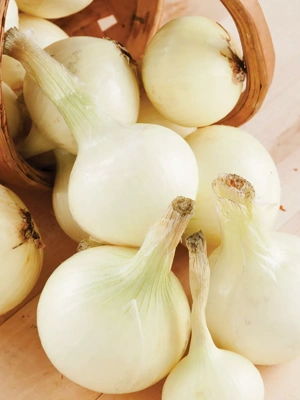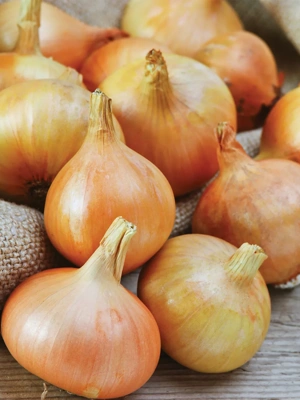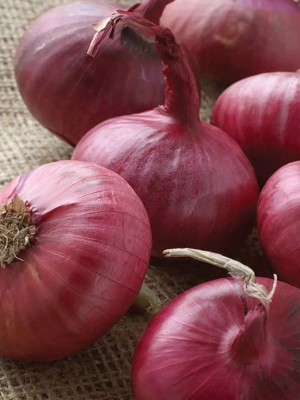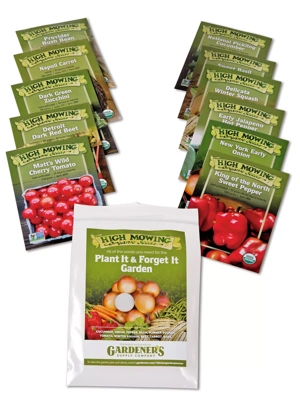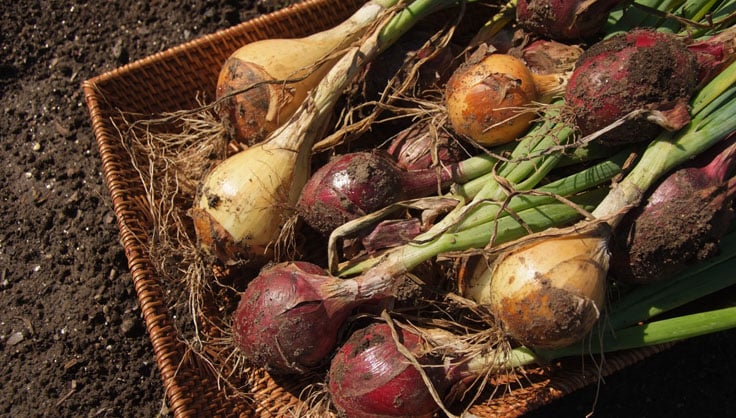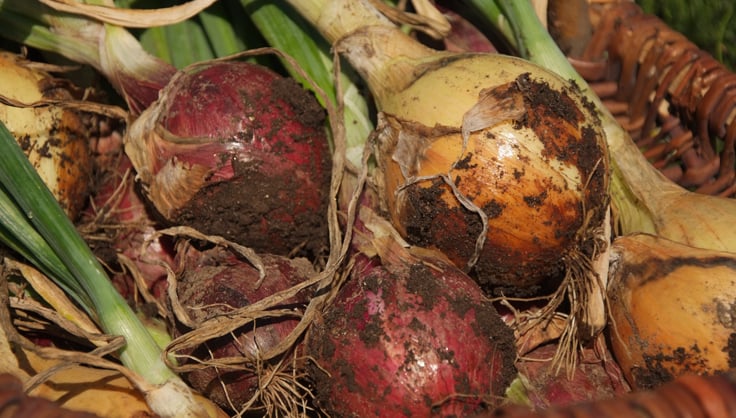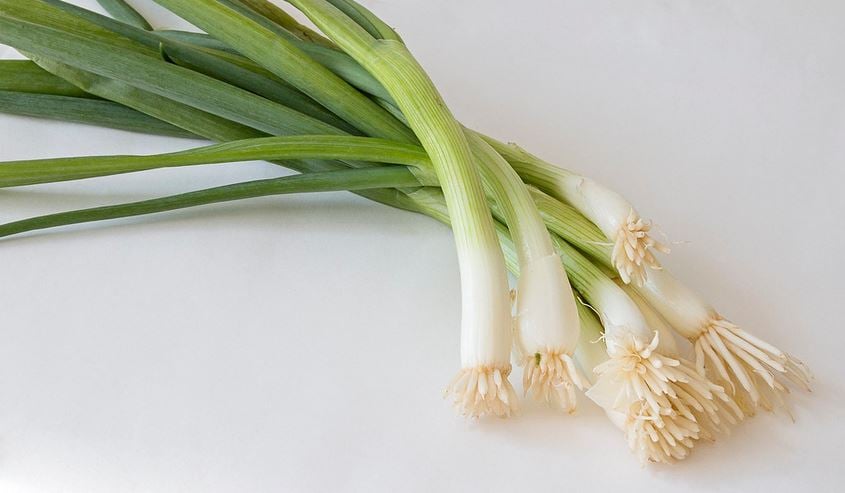Onions 101
Learn to grow this popular vegetable
Onions can be confusing for new gardeners. Should you grow long-day or short-day onions? Does it make a difference whether you grow them from seeds, seedlings or sets? How are storage onions different from sweet onions? Here's how to sort out the terms.
Long-day, short-day?
Day length refers to the number of hours of daylight, from sunrise to sunset. It increases from Dec. 21 to June 21, which is the longest day of the year. Day length triggers onion plants to begin developing bulbs.
- Short-day onions start developing bulbs when the day length reaches 10 to 12 hours. These are most suited to southern parts of the U.S. ? roughly the southern half of California to the tip of South Carolina ? where onions can be planted in fall or winter and enjoy a long growing season.
- Long-day onions don't begin forming bulbs until the day length is 14 to 16 hours per day. These are best for the northern states ? from northern Maryland to Oregon and north into Canada. Northern gardeners can grow short-day onions, too, but they won't get as large as those grown in the South.
- Intermediate-day onions start forming bulbs when day length is 12 to 14 hours per day and can be grown anywhere except the most southern parts of Texas and Florida.
Seeds, seedlings, or sets?
Onions are biennial plants, which means that they sprout from a seed and grow a bulb their first year. That's when bulbs are usually harvested. If left in the ground, the plant goes dormant for the winter and sprouts again in the spring. In its second season, however, the plant puts most of its energy into producing a flower and making seeds instead of a bulb.
Onions can be grown from any of these life stages: seed, seedling or dormant bulb. Here's how to choose which ones to grow.
- Sets are small dormant bulbs that grew from seed the previous season. Sets are commonly available and sold by the pound in spring at garden centers. Plant about 1-1/2 to 2-1/2" deep. They are best for growing scallions, which are harvested before the plants "bolt" or produce flower stalks. They can produce bulbs, but they won't be as large as those grown from seeds or seedlings.
- Seeds are the way to grow the widest variety of onions, including many uncommon and heirloom varieties. In most of the country, they must be started indoors and grown under lights at least two months before you plan to set them into the garden, or about 10 to 14 weeks before your last frost date. Because they are first-year plants, they will make large bulbs.
- Seedlings are plants that were started from seed in the current season. You can purchase them in bundles from mail-order nurseries, or in multi-packs from garden centers. Because they are first-year plants, you can expect large bulbs. Detailed planting instructions are shown in the slideshow, above.
Onions are mature and ready to harvest when their tops flop over. Pull up the bulb and let the whole plant dry slowly in a well-ventilated, dark place, up to several weeks. Once the stems have withered and the onions are completely dry, they can be moved indoors to a cool, dark location for storage. Some varieties may be stored for up to eight months, so with careful planning (and enough garden space) you can be eating homegrown onions all year round.
What are Scallions?
Scallions, also known as green onions or bunching onions, are young onions that have not formed bulbs. You can sow them much closer together — as little as an inch apart. Most varieties will work, but it's best to choose those that are especially suited to growing as scallions. Ideally they should be mild and sweet.
Harvest them as needed. Store in the refrigerator for up to a week.
Sweet vs. Storage onions
Depending on their variety and the soil in which they grew, onion bulbs contain differing levels of water, sugars and sulfur compounds. The amount of sulfur the bulb picks up from the soil will determine how pungent or tear-producing the onion will be and also how long it will keep in storage. Some varieties will keep in storage for months while others are best when used within weeks of harvest. You'll find this kind of information on the seed packet. One way to "store" onions that aren't good keepers: Make caramelized onions.
- Sweet onion varieties generally contain at least 6 percent sugar, lots of water and very little sulfur. Nearly all short-day or southern onions are of the sweet variety. Sweet onions, such as the Vidalia or Walla-Walla, are less sweet when grown in New England, where the soil contains more sulfur than it does in the South or far West. These mild-flavored onions can be eaten raw and are best used within a few weeks of harvest.
- Storage onions usually contain less than 5 percent sugar and have higher levels of sulfur, which gives them a long storage life and greater pungency. Curing the bulbs after harvest further reduces their water content and increases their storage life. Storage onions have more intense flavor and are used primarily for cooking.
Last updated: 12/29/2022
Print this Article:
Related items
Related Articles
Get the Dirt
Stay up to date on new articles and advice. Please fill out the information below.

